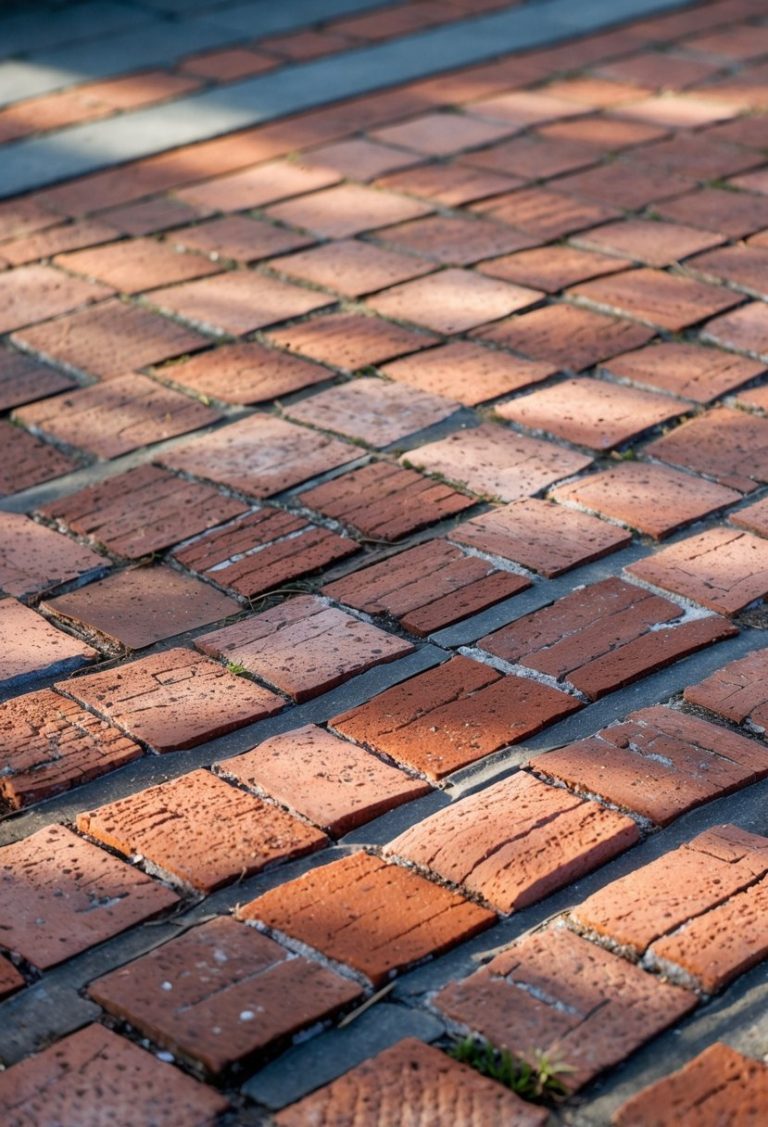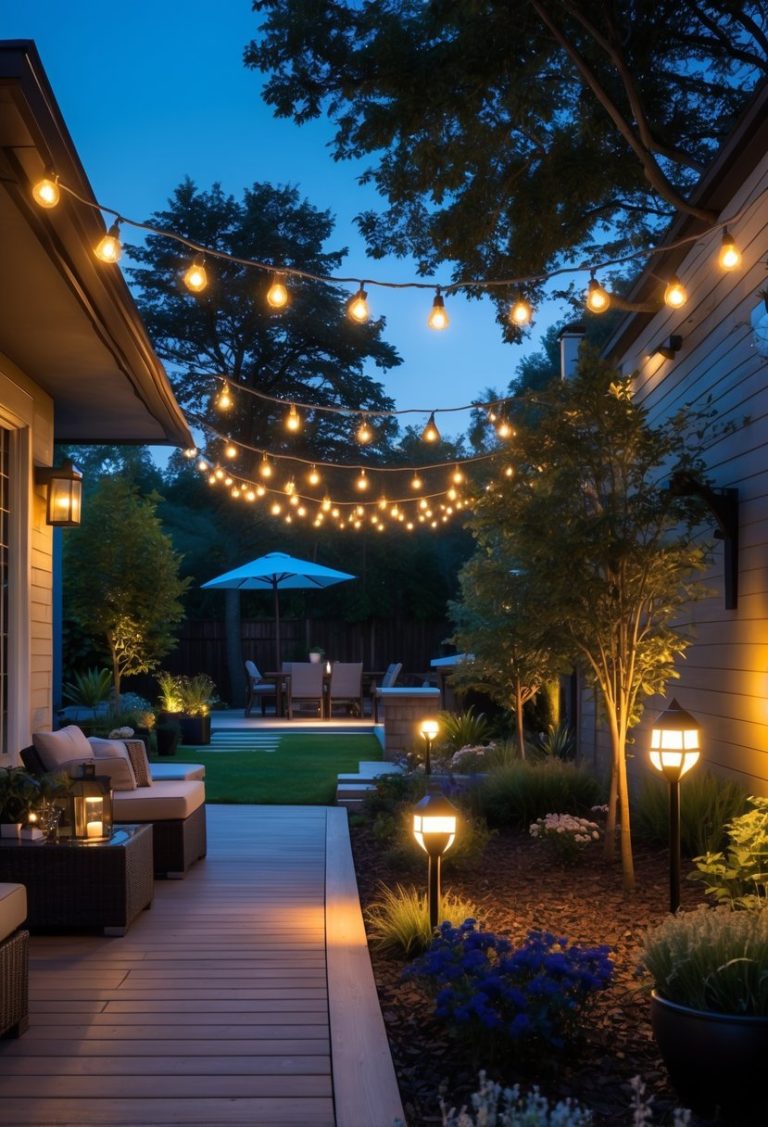Most Beautiful Garden Backyard Pathway Design Ideas for Enhancing Outdoor Aesthetics
Creating a beautiful garden pathway transforms your backyard into a functional and inviting space. It not only guides you through different areas but also adds style that complements your plants and overall design. Choosing the right materials and layout can make your garden walkway both practical and visually appealing.

Paths can be made from various materials like stone, gravel, wood, or brick, each offering a unique look and feel. Whether your style is modern or rustic, the shape and color of the path can highlight the best parts of your garden while making it easier to enjoy.
Planning your pathway well helps your garden feel organized and accessible. With simple design choices, you can turn a basic walkway into a standout feature that enhances your outdoor space.
Key Takeaways
- Select materials that match your garden’s style and purpose.
- Use the shape and color of paths to highlight your backyard’s best features.
- Plan carefully to create a walkway that looks good and is easy to maintain.
Fundamentals of Garden Backyard Pathway Design

Designing a garden pathway requires careful thought about how it fits your space, what materials to use, and how it looks. Each decision affects how easy and enjoyable it is to walk through your garden and how the path complements your backyard’s style.
Pathway Planning and Layout
Start by mapping out where your pathway will go. Think about where people naturally walk from and to, such as from a door to a patio or a garden bench.
Curved paths feel more relaxed and natural, while straight paths give a cleaner, modern look. You can mix both styles depending on your garden’s shape.
Measure the width carefully. A comfortable path is usually 2 to 3 feet wide. If you plan to use the path for heavy traffic, make it wider.
Consider lighting and drainage. Good lighting ensures safety at night. Proper drainage prevents water pooling on your pathway, which can cause slip hazards or damage.
Choosing the Right Materials
Select materials based on your garden’s style, budget, and maintenance needs.
- Pebble and Stone Walkway: Pebbles offer a casual, natural look. They work well in informal gardens but may need edging to keep stones in place.
- Pathway Stones Walkways: Larger stones or flagstones create a sturdy surface. These are durable and fit both classic and modern designs.
- Stepping Stone Landscaping: Stepping stones spaced along grass or mulch give a whimsical feel. These work best for low-traffic paths as they can be uneven.
Other material options include brick, wood, and pavers. Match materials to your climate; for example, wood may not last long in wet areas.
Design Principles for Aesthetic Appeal
Balance function with beauty by mixing shape, color, and texture.
Use contrasting colors to highlight the path—light stones can pop against green grass, or dark pavers can define a border.
Vary the shapes for visual interest. Round stepping stones add softness, while rectangular slabs create a sharp modern edge.
Consider adding visual breaks with plants or lighting along the edges. This guides movement and makes the path part of the garden’s flow.
Keep proportions consistent. A pathway too wide or narrow compared to your garden looks out of place. Choose a width that feels natural in your space.
Types of Beautiful Garden Pathways

When planning your garden pathway, consider materials that blend well with your outdoor space and fit your style. Each option offers different textures, appearances, and installation needs. You can choose from natural stones, smooth pebbles, or a mix of materials to create a unique walkway.
Stone Pathways
Stone pathways are durable and classic. You can use large flat stones or smaller flagstones to create a solid walkway. Stones like slate, granite, or limestone offer different colors and finishes. A stone path adds natural beauty and can handle heavy foot traffic.
Laying stones close together ensures a smooth walk, but you can space them apart for a stepped effect. Fill gaps with gravel or ground cover plants for added interest. A yard stone path also helps define areas in your garden while keeping it functional.
Pebble Pathways
Pebble pathways use small rounded stones that create a smooth, textured surface. Pebble walking paths are gentle on the feet and allow good drainage, making them practical for wet areas. You can find pebbles in various colors such as white, gray, or mixed earth tones.
To keep your pebble sidewalk ideas tidy, lay a weed barrier underneath and use edging to hold the stones in place. Pebbles are easy to install and cost-effective, but you may need to refill them over time as pebbles shift or get washed away.
Mixed Material Paths
Mixed material paths combine two or more elements like stone, wood, gravel, or pebbles. This approach adds visual interest and can highlight different parts of your garden. For example, you might use wooden planks with a pebble base or stepping stones with gravel in between.
This style allows you to customize the path’s look and function. It also helps with drainage and can be adapted to uneven terrain. When designing mixed material paths, make sure each material is secure and complements the overall garden design.
Design Ideas for Front and Backyard Walkways

Creating pathways can shape how you move through your yard and highlight your garden’s best features. Using the right materials and layout helps connect your home with outdoor spaces, giving them a clean, welcoming look.
Inviting Stone Path to Front Door
A stone path to your front door adds charm and durability. Choose flat, natural stones with a non-slip surface to ensure safety in all weather. Lay them in a curved or straight pattern depending on your yard’s shape.
Consider spacing the stones evenly with filler material like gravel or moss for a neat, finished look. Using contrasting stones can highlight the path and guide visitors clearly to your entrance. Stone pathways require low maintenance and can last for years.
Creative DIY Front Yard Walkway
For a budget-friendly walkway, you can build your own using materials like brick, gravel, or wood. Keep the design simple but intentional—straight or gently curved lines work best for smaller yards.
You can personalize the walkway by choosing colors or shapes that match your home’s exterior. Adding edging with concrete or metal can help keep gravel or mulch in place. DIY walkways give you control over style and cost, and you can update them over time with new materials.
Walkways Around the House
A path around the house improves access for gardening, maintenance, and outdoor relaxing. Use durable materials like concrete pavers or large stepping stones to create a smooth surface.
Keep the walkway wide enough for easy walking and consider adding ground covers or low plants beside it for balance. Lighting along the path improves safety and appearance at night. Planning a walkway around your home lets you move comfortably and adds structure to your backyard layout.
Practical Tips for Pathway Installation and Maintenance

A garden pathway needs a strong base and proper care to last. You must prepare the ground well before placing stones or pebbles, and keep the pathway clean and stable over time.
Preparing the Ground and Base Layers
Start by marking the pathway’s shape and size clearly. Remove grass, roots, and topsoil to a depth of 4-6 inches. This makes room for the base materials.
Next, add a layer of crushed stone or gravel about 3-4 inches thick. Compact this layer firmly using a tamper or plate compactor. This keeps the pathway steady and prevents stones from shifting.
Add a 1-2 inch layer of sand on top of the gravel. Smooth it out evenly to create a flat surface for your pathway stones or pebbles.
If you are using pathway stones walkways, set each stone carefully into the sand, leaving small gaps for drainage. For a pebble and stone walkway, spread pebbles evenly on top of the sand.
Long-Term Pathway Care
Keep your pathway free from weeds by adding a weed barrier under the base layers when installing. Regularly remove any weeds that appear.
Check for loose stones or shifting pebbles every few months. Reset stones by lifting and adjusting the sand or gravel underneath as needed.
After heavy rain, inspect your pathway for new dips or water pooling. Add more sand or gravel to low spots to keep the surface even.
Sweep your pathway regularly to prevent dirt buildup and keep the materials visible and attractive.
Maintain clean edges by trimming any grass or plants nearby. This prevents roots from disturbing the pathway base over time.
Frequently Asked Questions

Choosing the right material and design can make your garden pathway both beautiful and long-lasting. Consider the size of your space and how much time you want to spend on maintenance. This will help you pick the best options for your backyard.
What are the best materials to use for a durable and attractive garden path?
Natural stone, brick, and concrete are popular for their strength and beauty. These materials handle heavy foot traffic well and can last for years. You can also use gravel or wood chips for a softer look but expect more maintenance.
How can I create a garden pathway that requires minimal upkeep?
Use hard materials like stone or brick to reduce repairs. Avoid materials that wash away, like loose gravel. Also, make sure the path is slightly sloped for water drainage to prevent pooling and damage.
What are some cost-effective solutions for designing a beautiful garden path?
DIY options like gravel, mulch, or stepping stones can save money. Use recycled brick or concrete pavers for style without high costs. Planning a narrow path also lowers material needs and expenses.
How do I design a garden pathway that complements a small outdoor space?
Keep the pathway narrow but wide enough to walk comfortably. Use simple, clean lines or gentle curves to add flow without overpowering the space. Light-colored materials can make the area feel bigger.
What are the latest trends in modern garden pathway design?
Modern paths often use geometric shapes like squares or rectangles set with spaces of grass or ground cover. Mixing materials, like wood and stone, is also popular. Minimalist designs with clean lines create a sleek, modern look.
Can you suggest ways to incorporate natural elements into my garden pathway design?
Border your path with low-growing plants or flowers for a natural edge. Use materials like flagstone or pebbles that blend with the surroundings. Adding moss between stones can give a soft, green touch.






